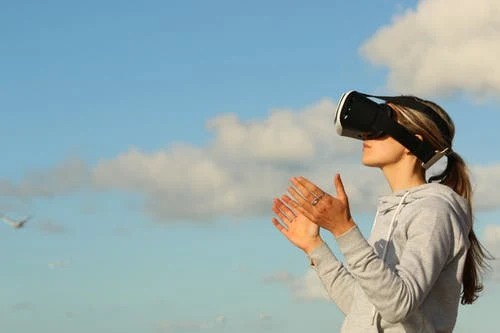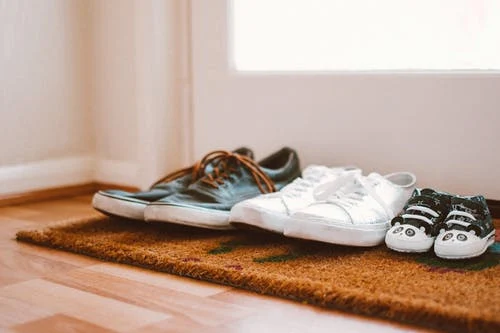When we think of wearable technology, what comes to mind is still bulky wrist-based devices, such as smartwatches and fitness trackers. We don’t want to wear such devices all day. In fact, there is still a long way to go for wearable devices to become "fashionable" and truly integrate into our daily lives.
Have you ever thought that completely interconnected clothes have actually appeared? Matthew Drink water, director of the London College of Fashion's fashion innovation agency, said in an interview with the media: "It is now 2016. Where are our smart clothes?"
So far, fashion technology products are far from what we wear every morning. At best, they are just some luminous skirts, such as the beautiful Cinderella long coat. When walking on the red carpet, the coat can make your owner more dazzling. There is also Google Glass (Google Glass), Google once cooperated with Diane von Furstenberg to show glasses.
All products are of great significance because they are experimental products that can lead the industry forward; on the other hand, these products cause harm to "wearable technology" and prevent wearable products from becoming fashionable products.
Related Topics:
Wearable technology changed the fashion industry
Wearable technology is an innovative technology first proposed by the Media Laboratory of MIT in the 1960s.
With this technology, we can embed multimedia, sensor, and wireless communication technology into people's clothes, support gestures, and eye movement operations, and other interactive ways, mainly exploring and creating directly wearable intelligent devices.
With the rapid development of computer hardware and software and Internet technology, the form of wearable intelligent devices began to diversify and gradually showed broad application potential in the industry, medical health, military, education, entertainment, and other fields.
The head-mounted video device allows you to
see the screen in the real world and do other things at the same time. It
enables you to take notes while listening to the professor's lectures, instead
of constantly glancing back and forth between the blackboard and notebook. You can
read e-mail while you're on the street without hitting people.
Having a wearable device is like having an
entire reference library that you can access instantly. Maps and ebooks are
similar to Webster's and taxonomic dictionaries, which are often used. With the
support of 5 Gigabit drives, it is insignificant to put the encyclopedia in the
wearable computer, and it can access a lot of information in real time.
All the notes, travel notes, class notes, and business meetings will always be with you. With a fast search engine, you can
call up the information you need in a few seconds, which is better than turning
up a dusty notebook from your attic. You will no longer have to find a pen and paper or worry about not finding the napkin on which you sketched the new
system design.
Similar to this is the development of multimedia computers, the electronic products of all consumers - music players, fax machines, pagers, audio magazines, or can hear, can read, or infinite digital transmission.
Similar to this is the development of multimedia computers, the electronic products of all consumers - music players, fax machines, pagers, audio magazines, or can hear, can read, or infinite digital transmission.
One aspect of wearable computing technology
that is rarely noticed is its reality enhancement technology: the seamless
combination of the virtual and real world. Electronic information storage is very
useful when the information on the outside world is covered.
For example, the title of the museum exhibition is displayed, the name information is displayed on the face (through face recognition technology), and the association chart of the current task is drawn.
For example, the title of the museum exhibition is displayed, the name information is displayed on the face (through face recognition technology), and the association chart of the current task is drawn.
The vague definition of wearable technology
refers to a computer that can be worn on the body as inconspicuously as
clothing, which is not only comfortable but also easy to save and use. However,
the definition of "smart clothes" is not satisfactory in detail.
Wearable computing technology
More
clearly defined is that wearable computing technology should have many
characteristics as follows:
1. Light and easy to use
The most prominent feature of wearable
technology is that it can be used in walking or other mobile modes. This
wearable technology is similar to the difference between desktops and laptops.
2. Free use
Wearable computers for military and
industrial use especially emphasize the freedom of hands and attach importance
to voice input and headset display or voice output. Other wearable technologies
may also use chord keyboards, dial-up inputs, and joystick inputs to reduce
dependence on the user's hands.
3. Sensor
In addition, for user input, a wearable product should have sensors that respond to the physical environment, which may
include wireless communication, GPS, a camera, or a microphone.
4. Instant reminders
A wearable product should be able to transmit
information to users even when it is not actively used. For example, if your
computer wants you to know that it has received a new email from someone else,
it should send the message to you immediately.
5. Work Forever
By default, the wearable device will always
turn on and work, sense, and display. This is the opposite of the normal
"personal digital assistant" based on pen input, which is placed in a
person's pocket and started only when the work needs to be completed.
Product application of wearable technology
Google glasses
Google glasses are essentially a combination of micro projector + camera + sensor + storage transmission + control
equipment. It can integrate glasses, smartphones, and cameras, and display
information in the form of smartphones in real-time through computerized
lenses. In addition, it is also a life assistant, which can provide us with GPS
navigation, SMS, photography, web browsing, and other functions.
Its working principle is actually very
simple. Through the microprojector in the glasses, the light is first cast on
a reflecting screen, and then refracted to the human eyeball through a convex
lens, so-called "first-order amplification" is realized. A virtual
screen of enough size is formed in front of the human eyes, which can display
simple text information and various data. So Google glasses look like a
wearable smartphone, which can help us take photos, and videos, and make phone calls
without the trouble of taking out the phone from our pocket.
Apple Watch I watch
The device is designed with curved glass,
which can be flattened or bent. It has a communication module inside, through
which users can complete a variety of tasks, including adjusting playlists,
viewing recent call records, and replying to SMS. Of course, its internal use is
naturally the IOS system of its own.
Just as the iPhone redefined the mobile
phone, the iPad ushered in the tablet era. I watch it is thought to be Apple's next
disruptive product. However, some analysts pointed out that I Watch will not
replace the iPhone, but more as a supplement to the iPhone and to expand the
functions of other devices, making it more convenient for users to use Apple
devices.
For example, when users don't know where their phone is, they can use I watch the Siri function to make the iPhone sound and vibrate so that users can find the phone smoothly.
For example, when users don't know where their phone is, they can use I watch the Siri function to make the iPhone sound and vibrate so that users can find the phone smoothly.
Google smart shoes
This smart shoe is equipped with
accelerators, gyroscopes, and other devices, which are connected to smartphones through Bluetooth so that users can be monitored. In addition, the
shoes are equipped with a loudspeaker to play the shoe information received by
the sensor in the form of voice comments.
But Google said it had no clear market plan
for the shoe and had no intention of entering the shoe industry. Through the
product, Google hopes to make shoes more personalized while comfortable, and at
the same time expresses that it will open-source the product information. In
the near future, people can make their shoes more intelligent, and DIY shoes,
more personalized.
Drum T-shirt
If you are a music lover, this T-shirt must
be very popular. The drum controller is built into the dress, and users can make
different drum sounds by tapping different positions, which is similar to the
shelf drum software on the tablet.
If you don't think it's good enough, consumers can also match a pair of pants that can be equipped with mini loudspeakers, so that they can play music anytime and anywhere, and become the focus anytime and anywhere.
If you don't think it's good enough, consumers can also match a pair of pants that can be equipped with mini loudspeakers, so that they can play music anytime and anywhere, and become the focus anytime and anywhere.
Glove one: glove one
Bryan Cera, a Milwaukee designer, has
designed an innovative glove one mobile phone that can be worn like a glove.
Its appearance is like a part of the futuristic mechanical armor. The button is
designed on the inside of the finger joint, and then the hand is placed in the shape of "six", the thumb is used as the receiver, and the little
finger is used as the microphone, so the call can be realized. On the back of the glove one, there is a SIM card slot and a USB interface. The charging of glove
one can be done through the USB interface.
Social denim
This kind of jeans supports Bluetooth
function, which can connect jeans with smartphones. You only need to click the
small device in the front pocket to have instant communication, which is
convenient for users to update their location information on Facebook. In
addition, it can also broadcast your emotions in real-time, and track, and share
personal happiness.
Satellite navigation shoes: No Place Like Home
This pair of shoes has a very advanced
wireless global positioning system in the heel, which sets the destination
through USB. This kind of leather shoe that can be navigated is also very
useful. When you need to navigate, just tap the ground with the heel.
After
startup, it can be seen that the LED indicator light installed in the front
part of the shoes will be on. One shoe indicates the distance from the destination,
while the other shoe indicates the direction for the user.
Virtual Keyboard
It's a virtual keyboard the size of a small
mobile phone (90 x 34 x 24 mm), allowing users to easily type articles or
e-mails like a normal keyboard. I-TECH virtual keyboard uses light projection
technology, which can project a full-size computer keyboard on almost any
plane. When the virtual keyboard is used in PDAs and smartphones, it can easily
send and receive an e-mail, process text, and make spreadsheets.
Users can leave their laptops and desktops at home. The applicability technology of the virtual keyboard studies the finger movement of users decodes and records the hitting action of the keyboard. Because the virtual keyboard is the image formed by light projection, it will disappear completely when not in use.
Users can leave their laptops and desktops at home. The applicability technology of the virtual keyboard studies the finger movement of users decodes and records the hitting action of the keyboard. Because the virtual keyboard is the image formed by light projection, it will disappear completely when not in use.
The development trend of wearable technology
Invisible
According to Moore's law, as electronic
components become smaller and smaller, the production efficiency will be greater and
the function will be more powerful.
In other words, you can think of the
current wearable device as a stereo speaker on your wrist. Wearable equipment
and fashion will be inseparable.
Individualization
Like a wedding ring, it's a very personal thing to wear for a long time. Therefore, unless the product has a very
important medical use, such as hearing aids, there are few wearable devices
that consumers can wear all the time.
Cuff incorporated personalized design into
wearable technology. They embed technology in a range of jewelry so that users
can choose which device to wear each day in their own mood. In this way,
wearable equipment has become a part of jewelry, which is not only a kind of
technology accessory but also a fashion attitude.
Efficiency
With the maturity of wearable devices, there
are other ways of power supply. Tommy Hilfiger officially launched a new way of
charging, which uses the cloth embedded in the solar cell to charge the device.
In addition, there are devices powered by kinetic energy and even the idea of
using body heat to provide energy for the LED lights on the ring. Although
these features are still a long way from commercialization, they will be
applied to wearable devices soon.
Accuracy
From the GPA of children to the BMI of adults, the
numbers run through all aspects of our lives. With the improvement of people's
requirements for the accuracy of the equipment, the approximate value can no
longer meet the needs of consumers, and the steps can no longer satisfy people.
At present, we haven't seen the industry standard setting relevant terms for manufacturers. In the future, wearable
product brands can guarantee the accuracy of devices. Maybe in the future, you
will see that Jawbone's packaging says "Gesture tracking accuracy is
99.5%".
Permission settings
Have you ever thought that advertisers will
push ads to smart wristbands around the clock? As advertising revenues in the
TV and newspaper industries decrease, marketers covet this approach and these
new devices provide new opportunities for them to locate potential customers.
In order not to be the target of spam
harassment, smart consumers will require the permission settings of the device,
and stipulate that messages can be pushed. Imagine that a smartwatch can be
set up so that only partners, children's schools, and mothers can push
notifications to the watch during working hours from Monday to Friday, which
should save a lot of annoying and unnecessary interruptions.
Sentient
In her movie, Samantha explains how she
works: "by intuition. I grow and improve through my daily experience,
which makes me "I". I change all the time, just like you. "
Why can't hundreds of sports trackers learn
to recognize more sports, such as rope skipping, Kettlebell swinging, or salsa
dancing? People's interests are changing, and evolving. Their wearable devices must
also evolve and learn new things. Today's single-function pedometer on the
sports tracker will not exist for a long time.
Multipoint connection
The focus of the discussion on wearable technology
will soon shift to whether the sensors on the device can measure the data
around the body in time. People wear mobile trackers and carry smartphones in
their wallets. Both use internal accelerometers and gyroscopes to collect
motion sensor data.
Technicians are studying how to get
information from multiple sensors of the body at the same time, so as to show
users how their body moves and behaves through multiple devices and sensors.
All blend into one harmonious whole
Imagine the following scenario: holding
something in your arms, struggling with your right hand to find the key to open
the door, but carelessly falling all over the ground? Everyone will be like
this in the future: when you walk to the door full of sundries in your arms,
your heartbeat signal will send a signal to the intelligent lock on the door
through the wearable device and unlock automatically.
When you pass through the living room and the wearable device on your wrist detects that your temperature is above average, it will automatically send a signal to the next thermostatic system to turn on the air conditioner. It can also detect the water level of the human body. When you enter the kitchen, it can trigger the intelligent refrigerator to automatically pour water for you.
When you pass through the living room and the wearable device on your wrist detects that your temperature is above average, it will automatically send a signal to the next thermostatic system to turn on the air conditioner. It can also detect the water level of the human body. When you enter the kitchen, it can trigger the intelligent refrigerator to automatically pour water for you.
Conclusion of How has wearable technology changed the fashion industry
Although it's too early to predict which
features or shapes will be popular in the future, wearable technology is still
an area worth studying. Data processing components have never been as small as
they are today, and at the same time provide opportunities for medical progress
or annoying marketing nuisance. We are also moving closer to creating useful,
usable, and satisfying products.
*** Please Share These Resources with Colleagues, Friends, and Family ***









